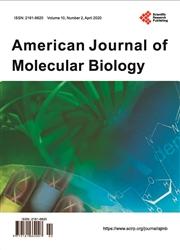Identification of a Candida albicans Biofilm Inhibitor
引用次数: 0
Abstract
Candida albicans proliferates in the skin and oral cavity and is the causative agent of candida dermatitis and oral candidiasis. C. albicans is known to form biofilms on oral mucosa and denture surfaces. Formation of biofilms deteri-orates the permeability of antifungal drugs, decreasing their effectiveness. Therefore, in this study, I identified a compound with inhibitory activity against C. albicans biofilm formation. Heat shock protein 90 was selected as the target protein, and a potential ligand for the same was extracted and identified as 2-(4-methylpiperazin-1-yl)cyclopentanol. C. albicans was then cultured with varying concentrations of this compound: 0 mmol/L, 0.63 mmol/l. 2.5 mmol/l, and 10 mmol/l, and biofilm formation was measured via crystal violet assay. The findings demonstrated that 2-(4-methylpiperazin-1-yl)cyclo-pentanol substantially inhibits biofilm formation when added at a concentration of 0.63 mmol/l or higher. It is suggested that C. albicans could be elimi-nated more efficiently using this compound in combination with the existing antifungal drug miconazole. Further, the compound may also be useful as a disinfectant for medical devices, such as catheters, to prevent the formation of C. albicans biofilms.白色念珠菌生物膜抑制剂的鉴定
白色念珠菌在皮肤和口腔中增殖,是念珠菌皮炎和口腔念珠菌病的病原体。已知白色念珠菌在口腔黏膜和假牙表面形成生物膜。生物膜的形成破坏了抗真菌药物的渗透性,降低了它们的有效性。因此,在本研究中,我鉴定了一种对白色念珠菌生物膜形成具有抑制活性的化合物。选择热休克蛋白90作为靶蛋白,提取其潜在配体,鉴定为2-(4-甲基哌嗪-1-酰基)环戊醇。然后用不同浓度的该化合物培养白色念珠菌:0 mmol/L, 0.63 mmol/L。2.5 mmol/l、10 mmol/l,结晶紫法测定生物膜形成情况。结果表明,当添加浓度为0.63 mmol/l或更高时,2-(4-甲基哌嗪-1-酰基)环戊醇可显著抑制生物膜的形成。提示该化合物与现有的抗真菌药物咪康唑联合使用可更有效地消除白色念珠菌。此外,该化合物还可用作医疗装置的消毒剂,例如导管,以防止白色念珠菌生物膜的形成。
本文章由计算机程序翻译,如有差异,请以英文原文为准。
求助全文
约1分钟内获得全文
求助全文

 求助内容:
求助内容: 应助结果提醒方式:
应助结果提醒方式:


